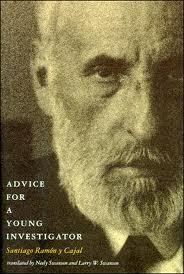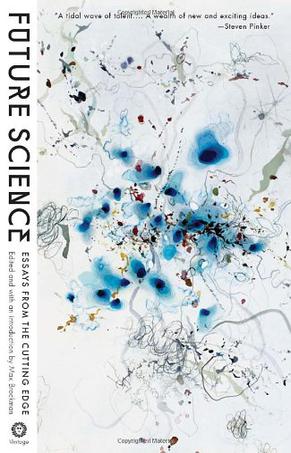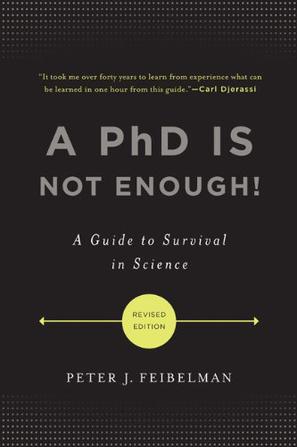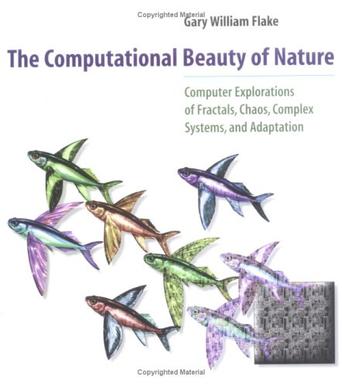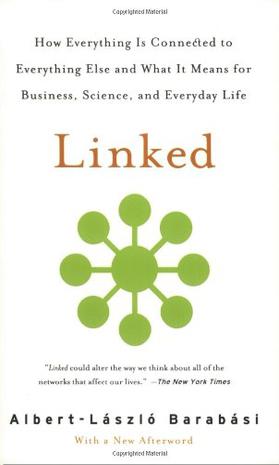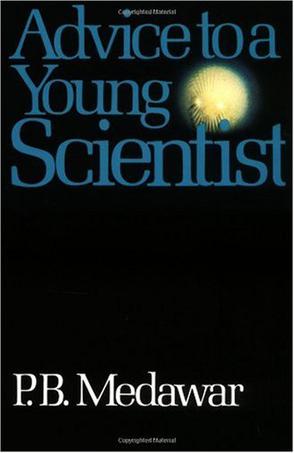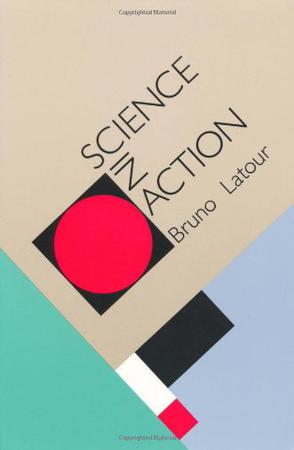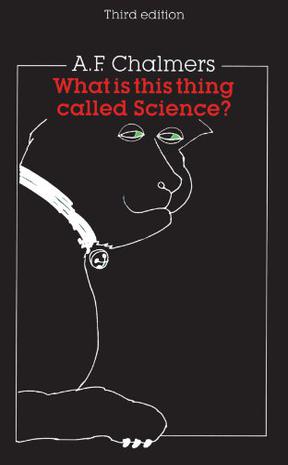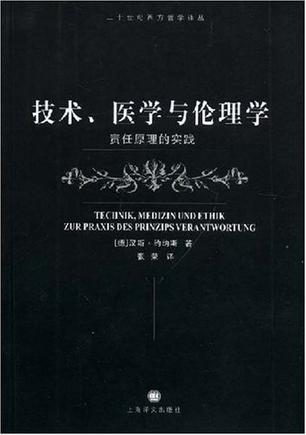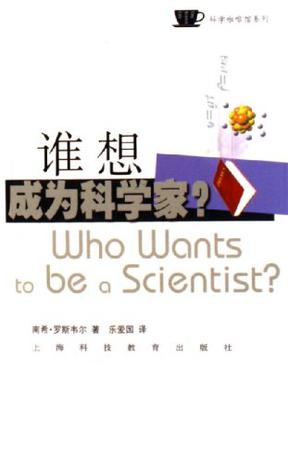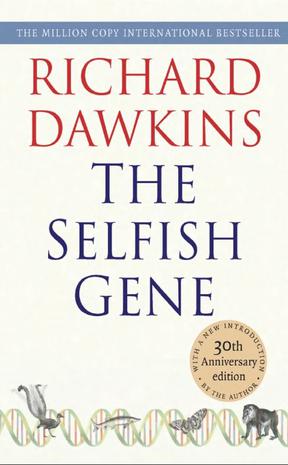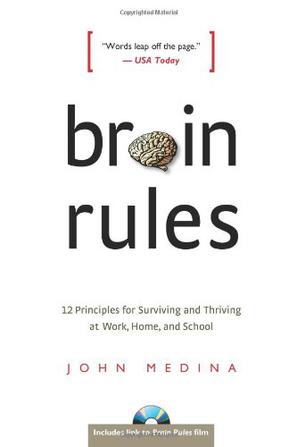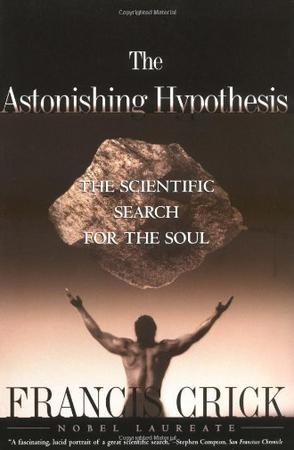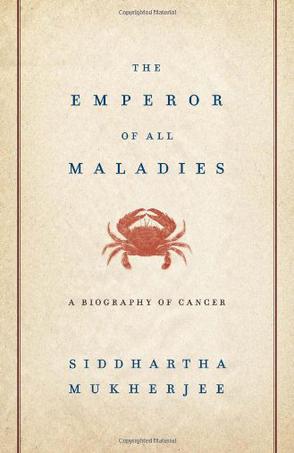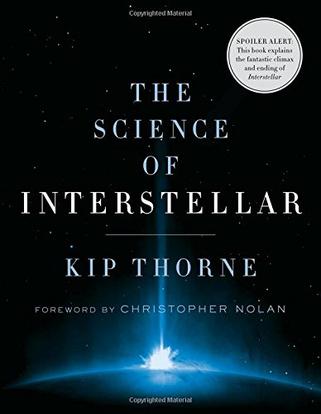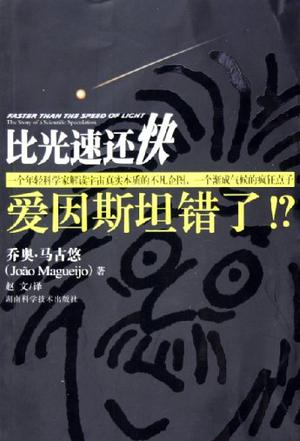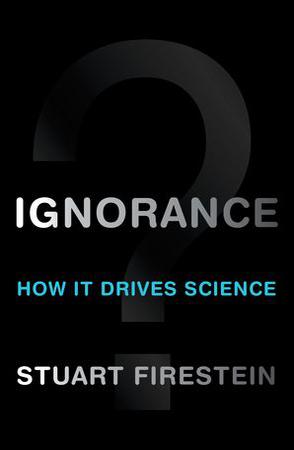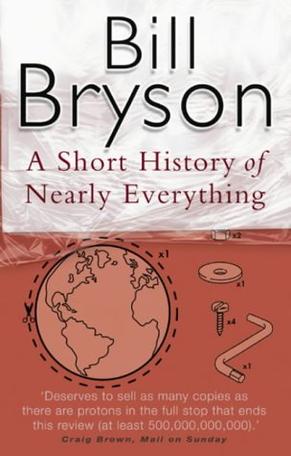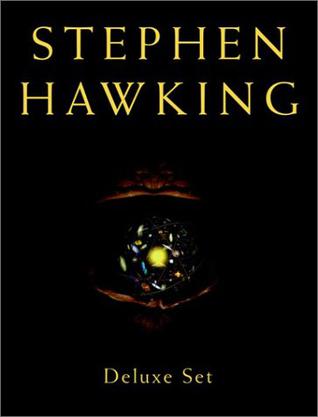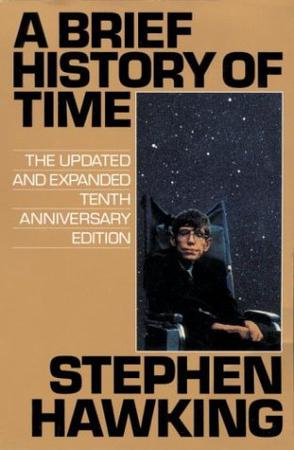欢迎来到相识电子书!
标签:Science
-
Advice for a young investigator
Santiago Ramon y Cajal was a mythic figure in science. Hailed as the father of modern anatomy and neurobiology, he was largely responsible for the modern conception of the brain. His groundbreaking works were New Ideas on the Structure of the Nervous System and Histology of the Nervous System in Man and Vertebrates. In addition to leaving a legacy of unparalleled scientific research, Cajal sought to educate the novice scientist about how science was done and how he thought it should be done. This recently rediscovered classic, first published in 1897, is an anecdotal guide for the perplexed new investigator as well as a refreshing resource for the old pro. Cajal was a pragmatist, aware of the pitfalls of being too idealistic -- and he had a sense of humor, particularly evident in his diagnoses of various stereotypes of eccentric scientists. The book covers everything from valuable personality traits for an investigator to social factors conducive to scientific work. --from amazon -
Future Science
Editor Max Brockman introduces the work of some of today’s brightest and most innovative young scientists in this fascinating and exciting collection of writings that describe the very boundaries of our knowledge. Future Science features nineteen young scientists, most of whom are presenting their innovative work and ideas to a general audience for the first time. Featured in this collection are William McEwan (son of the novelist), a virologist, discussing his research into the biology of antiviral immunity; Naomi Eisenberger, a neuroscientist, wondering how social rejection affects us physically; Jon Kleinberg, a computer scientist, showing what massive datasets can teach us about society and ourselves; and Anthony Aguirre, a physicist, who gives readers a tantalizing glimpse of infinity. -
A PhD Is Not Enough!
A Ph.D. Is Not Enough! is required reading for anyone thinking of applying to graduate school or entering the science job market. Focusing on critical survival skills, it offers sound advice on selecting a thesis or postdoctoral adviser; choosing among research jobs in academia, government laboratories, and industry; and defining a research program. This new edition features updates throughout and a new chapter reflecting today's rapidly changing world. -
The Computational Beauty of Nature
"Simulation," writes Gary Flake in his preface, "becomes a form of experimentation in a universe of theories. The primary purpose of this book is to celebrate this fact."In this book, Gary William Flake develops in depth the simple idea that recurrent rules can produce rich and complicated behaviors. Distinguishing "agents" (e.g., molecules, cells, animals, and species) from their interactions (e.g., chemical reactions, immune system responses, sexual reproduction, and evolution), Flake argues that it is the computational properties of interactions that account for much of what we think of as "beautiful" and "interesting." From this basic thesis, Flake explores what he considers to be today's four most interesting computational topics: fractals, chaos, complex systems, and adaptation.Each of the book's parts can be read independently, enabling even the casual reader to understand and work with the basic equations and programs. Yet the parts are bound together by the theme of the computer as a laboratory and a metaphor for understanding the universe. The inspired reader will experiment further with the ideas presented to create fractal landscapes, chaotic systems, artificial life forms, genetic algorithms, and artificial neural networks. -
Linked
A cocktail party. A terrorist cell. Ancient bacteria. An international conglomerate. All are networks, and all are a part of a surprising scientific revolution. Albert-László Barabási, the nation's foremost expert in the new science of networks, takes us on an intellectual adventure to prove that social networks, corporations, and living organisms are more similar than previously thought. Grasping a full understanding of network science will someday allow us to design blue-chip businesses, stop the outbreak of deadly diseases, and influence the exchange of ideas and information. Just as James Gleick brought the discovery of chaos theory to the general public, Linked tells the story of the true science of the future. -
Advice to a Young Scientist
Advice to a young scientist by Peter Medawar (Basic Books). The titan of 20th century molecular medicine gives well-meaning and funny (in the British sense) advice on (from the chapter headings): How do I tell if I am cut out to be a scientific research worker? - What shall I do research on? - How can I equip myself to be a scientist or a better one? - Women in science - Aspects of scientific life and manners - Of younger and older scientists - Presentations - Experiment and discovery - Prizes and rewards - The scientific process. Some details of the 25-year old book feel out of date now but it still is an excellent companion up to your first faculty position. See the following quote: "A novice must stick it out until he discovers whether the rewards and compensations of the scientific life are for him comensurate with the disappointments and the toil; but if once a scientist experiences the exhilaration of discovery [...] then he is hooked, and no other kind of life will do." -
Science in Action
Science and technology have immense authority and influence in our society, yet their working remains little understood. The conventional perception of science in Western societies has been modified in recent years by the work of philosophers, sociologists and historians of science. In this book Bruno Latour brings together these different approaches to provide a lively and challenging analysis of science, demonstrating how social context and technical content are both essential to a proper understanding of scientific activity. Emphasizing that science can only be understood through its practice, the author examines science and technology in action: the role of scientific literature, the activities of laboratories, the institutional context of science in the modern world, and the means by which inventions and discoveries become accepted. From the study of scientific practice he develops an analysis of science as the building of networks. Throughout, Bruno Latour shows how a lively and realistic picture of science in action alters our conception of not only the natural sciences but also the social sciences and the sociology of knowledge in general. This stimulating book, drawing on a wealth of examples from a wide range of scientific activities, will interest all philosophers, sociologists and historians of science, scientists and engineers, and students of the philosophy of social science and the sociology of knowledge. -
技术、医学与伦理学
汉斯·约纳斯是20世纪著名的哲学家,曾师从胡塞尔、海德格尔和布尔特曼学习哲学、神学和艺术史,1993年逝世。本书作为作者的代表作《责任原理》一书的姐妹篇,有其重要的科学意义。在本书中,作者抨击了科学自由的观念和研究自由的假定,作者认为,在现代自然研究中,从前关于“纯粹的”和“运用的”科学之间、理论与实践之间的区分,已渐渐消失了。二者已经在研究程序中融合在一起。为此,作者提出要对科学进行彻底的自我限制,提出“一个自愿的自我检视观念”。 -
谁想成为科学家
本书系统介绍了与开展科研有关的各方面内容,主要有研究方向的选择,成功的面试,处理与导师的关系,怎样进行演讲、发表高质量的论文、提高知名度等,此外,还包括道德规范和学术欺诈、知识产权保护和技术开发等。 -
The Selfish Gene
最能代表二十世纪的百大好书之一 像小说般精采的科普书,全球畅销百万册 任何生物,包括我们,都只是求生机器, 暗地里已被输入某些程式,用来保养那些叫做基因的自私分子。 这么说来,我们不都成了基因的俘虏? 种种行为早已由基因命定?真是这样吗? 如果您不愿意成为基因的俘虏,就请先了解《自私的基因》。 这本书充满想像力,就像科幻小说…… 任何生物,包括我们,都只是求生机器, 暗地里已被输入某些程式, 用来保养那些叫做基因的自私分子。 这么说来,我们不都成了基因的俘虏? 但这本书却是实实在在的科学…… 动物也会实施家庭计画? 父母对子女的照顾,会有大小眼吗? 雌性择偶为何比雄性更小心? 工蚁凭什么要为女蚁王卖命? 好人真的会出头吗? 从「自私的基因」观点出发,这些问题全都可以找到答案。 名人推荐 《自私的基因》这本科普书, 让每一位读者读来,都觉得自己一定是个天才。 《纽约时报》 这本书寓意深厚、机敏流露, 实在写得太好了…… 令人忍不住拍手叫好! 梅达华(Peter Medawar),诺贝尔生理医学奖得主 讨论演化的科普书很常见;好的科普书很罕见。 而道金斯的书,堪称绝佳之作。 查诺夫(Eric L. Charnov),《生物评论季刊》 Inheriting the mantle of revolutionary biologist from Darwin, Watson, and Crick, Richard Dawkins forced an enormous change in the way we see ourselves and the world with the publication of The Selfish Gene. Suppose, instead of thinking about organisms using genes to reproduce themselves, as we had since Mendel's work was rediscovered, we turn it around and imagine that "our" genes build and maintain us in order to make more genes. That simple reversal seems to answer many puzzlers which had stumped scientists for years, and we haven't thought of evolution in the same way since. Why are there miles and miles of "unused" DNA within each of our bodies? Why should a bee give up its own chance to reproduce to help raise her sisters and brothers? With a prophet's clarity, Dawkins told us the answers from the perspective of molecules competing for limited space and resources to produce more of their own kind. Drawing fascinating examples from every field of biology, he paved the way for a serious re-evaluation of evolution. He also introduced the concept of self-reproducing ideas, or memes, which (seemingly) use humans exclusively for their propagation. If we are puppets, he says, at least we can try to understand our strings. --Rob Lightner --This text refers to an out of print or unavailable edition of this title. -
Brain Rules
See how the brain works while using it in the process of reading this book! Most of us have no idea what's really going on inside our heads. Yet brain scientists have uncovered details every business leader, parent, and teacher should know - like that physical activity boosts your brain power.How do we learn? What exactly do sleep and stress do to our brains? Why is multi-tasking a myth? Why is it so easy to forget - and so important to repeat new information? Is it true that men and women have different brains?In "Brain Rules", Dr. John Medina, a molecular biologist, shares his lifelong interest in how the brain sciences might influence the way we teach our children and the way we work. In each chapter, he describes a brain rule - what scientists know for sure about how our brains work - and then offers transformative ideas for our daily lives.Medina's fascinating stories and sense of humour breathe life into brain science. You'll learn why Michael Jordan was no good at baseball. You'll peer over a surgeon's shoulder as he proves that we have a Jennifer Aniston neuron. You'll meet a boy who has an amazing memory for music but can't tie his own shoes. -
The Astonishing Hypothesis
从大脑神经工作原理解释意识的产生和发展。 -
The Emperor of All Maladies
Starred Review. Mukherjee's debut book is a sweeping epic of obsession, brilliant researchers, dramatic new treatments, euphoric success and tragic failure, and the relentless battle by scientists and patients alike against an equally relentless, wily, and elusive enemy. From the first chemotherapy developed from textile dyes to the possibilities emerging from our understanding of cancer cells, Mukherjee shapes a massive amount of history into a coherent story with a roller-coaster trajectory: the discovery of a new treatment--surgery, radiation, chemotherapy--followed by the notion that if a little is good, more must be better, ending in disfiguring radical mastectomy and multidrug chemo so toxic the treatment ended up being almost worse than the disease. The first part of the book is driven by the obsession of Sidney Farber and philanthropist Mary Lasker to find a unitary cure for all cancers. (Farber developed the first successful chemotherapy for childhood leukemia.) The last and most exciting part is driven by the race of brilliant, maverick scientists to understand how cells become cancerous. Each new discovery was small, but as Mukherjee, a Columbia professor of medicine, writes, "Incremental advances can add up to transformative changes." Mukherjee's formidable intelligence and compassion produce a stunning account of the effort to disrobe the "emperor of maladies." (Nov.) (c) Copyright © Reed Business Information, a division of Reed Elsevier Inc. All rights reserved. -
The Science of Interstellar
A journey through the otherworldly science behind Christopher Nolan’s highly anticipated film, Interstellar, from executive producer and theoretical physicist Kip Thorne. Interstellar, from acclaimed filmmaker Christopher Nolan, takes us on a fantastic voyage far beyond our solar system. Yet in The Science of Interstellar, Kip Thorne, the physicist who assisted Nolan on the scientific aspects of Interstellar, shows us that the movie’s jaw-dropping events and stunning, never-before-attempted visuals are grounded in real science. Thorne shares his experiences working as the science adviser on the film and then moves on to the science itself. In chapters on wormholes, black holes, interstellar travel, and much more, Thorne’s scientific insights—many of them triggered during the actual scripting and shooting of Interstellar—describe the physical laws that govern our universe and the truly astounding phenomena that those laws make possible. Interstellar and all related characters and elements are trademarks of and © Warner Bros. Entertainment Inc. (s14). -
比光速还快
在科学的领域中,人们无止境地争论,并表达出不同的意见。科学,无非就是试验新点子进而接受或拒绝的一个过程。本书谈的是一个知名科学家的VSL(光速改变理论)旅程,他要挑战的对象是爱因斯坦,而那很有可能会让一个物理学家丢掉饭碗。作者自信能够传达的一种感觉是:学科学 不仅是有趣,更能够丰富你人生经验,正因如此,VSL的故事可能比一般人所想象的还要精彩而生动,本书适合任何想一窥当代宇宙学发展状况,想知识科学家是怎样提出、发展、完成他们想法的读者,甚至是想进入这个领域的年轻学子比起一般的科普书,本书披露了更多的私密细节,它传达了一个年轻科学家解读宇宙真实本质的不凡企图,以及为了捍卫理念所做的种种奋斗。尽管科学家之间分分合合,但科学本身还是这个不太纯净的世界所能提供的最纯净的东西。 -
Ignorance
- The book argues that ignorance, not knowledge, is what drives science - The book provides a fascinating inside-view of the way every-day science is actually done - The book features intriguing case histories of how individual scientists use ignorance to direct their research Knowledge is a big subject, says Stuart Firestein, but ignorance is a bigger one. And it is ignorance—not knowledge—that is the true engine of science. Most of us have a false impression of science as a surefire, deliberate, step-by-step method for finding things out and getting things done. In fact, says Firestein, more often than not, science is like looking for a black cat in a dark room, and there may not be a cat in the room. The process is more hit-or-miss than you might imagine, with much stumbling and groping after phantoms. But it is exactly this "not knowing," this puzzling over thorny questions or inexplicable data, that gets researchers into the lab early and keeps them there late, the thing that propels them, the very driving force of science. Firestein shows how scientists use ignorance to program their work, to identify what should be done, what the next steps are, and where they should concentrate their energies. And he includes a catalog of how scientists use ignorance, consciously or unconsciously—a remarkable range of approaches that includes looking for connections to other research, revisiting apparently settled questions, using small questions to get at big ones, and tackling a problem simply out of curiosity. The book concludes with four case histories—in cognitive psychology, theoretical physics, astronomy, and neuroscience—that provide a feel for the nuts and bolts of ignorance, the day-to-day battle that goes on in scientific laboratories and in scientific minds with questions that range from the quotidian to the profound. Turning the conventional idea about science on its head, Ignorance opens a new window on the true nature of research. It is a must-read for anyone curious about science. -
A Brief History of Time
Book Description "A Brief History of Time", published in 1988, has been a landmark volume in scientific writing and in worldwide acclaim and popularity, with more than nine million copies sold. That edition was on the cutting edge of what was then known about the nature of the universe. Since its publication, however, there have been extraordinary advances in the technology of observing both the micro- and the macrocosmic world, confirming many of Professor Hawking's predictions. Eager to bring to his original text the new knowledge revealed by these observations, Hawking has written a new introduction, updated chapters throughout, and added an entirely new chapter on Wormholes and Time Travel. "A Brief History of Time" has guided nonscientists everywhere to confront the supreme questions of the nature of time and the universe, taking them to distant galaxies, black holes, alternate dimensions — as close as man has ever ventured to the mind of God. This anniversary edition makes vividly clear why Professor Hawking's eloquent classic has transformed our view of the universe. Amazon.com Stephen Hawking, one of the most brilliant theoretical physicists in history, wrote the modern classic A Brief History of Time to help nonscientists understand the questions being asked by scientists today: Where did the universe come from? How and why did it begin? Will it come to an end, and if so, how? Hawking attempts to reveal these questions (and where we're looking for answers) using a minimum of technical jargon. Among the topics gracefully covered are gravity, black holes, the Big Bang, the nature of time, and physicists' search for a grand unifying theory. This is deep science; these concepts are so vast (or so tiny) as to cause vertigo while reading, and one can't help but marvel at Hawking's ability to synthesize this difficult subject for people not used to thinking about things like alternate dimensions. The journey is certainly worth taking, for, as Hawking says, the reward of understanding the universe may be a glimpse of "the mind of God." --Therese Littleton From Library Journal A new edition?with pictures?for those who couldn't fathom the original. About Author Stephen Hawking, who was born on the anniversary of Galileo's death in 1942, holds Isaac Newton's chair as Lucasian Professor of Mathematics at the University of Cambridge. Widely regarded as the most brilliant theoretical physicist since Einstein, he is also the author of Black Holes and Baby Universes, a collection of essays published in 1993, as well as numerous scientific papers and books. Book Dimension : length: (cm)22.8 width:(cm)15.5 点击链接进入中文版: 时间简史(插图本) 注:该书有2个封面内容完全一致,货品随机发送
热门标签
下载排行榜
- 1 梦的解析:最佳译本
- 2 李鸿章全传
- 3 淡定的智慧
- 4 心理操控术
- 5 哈佛口才课
- 6 俗世奇人
- 7 日瓦戈医生
- 8 笑死你的逻辑学
- 9 历史老师没教过的历史
- 10 1分钟和陌生人成为朋友

